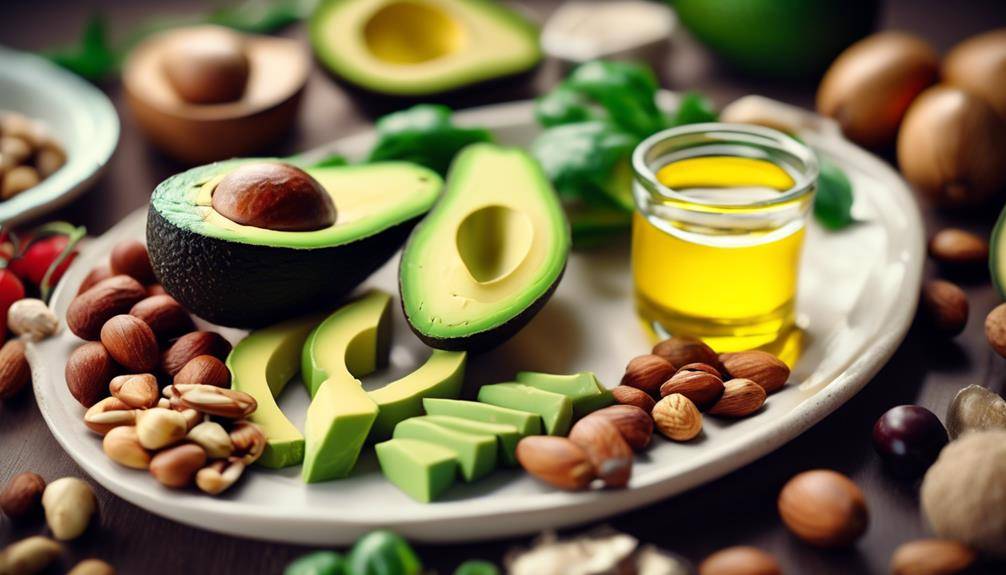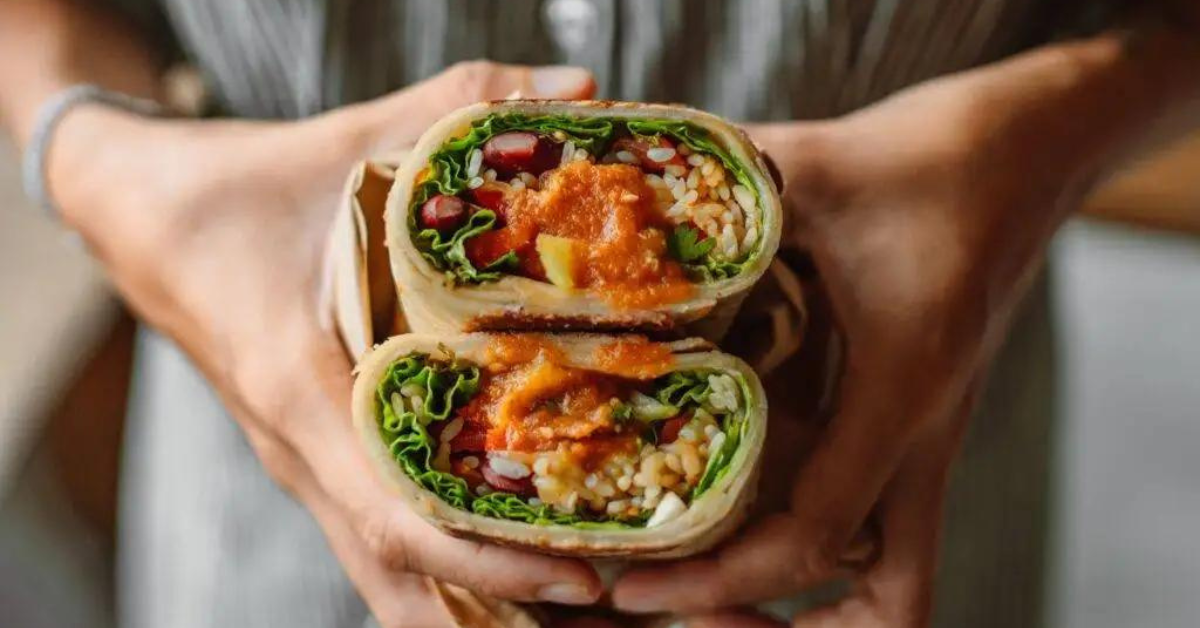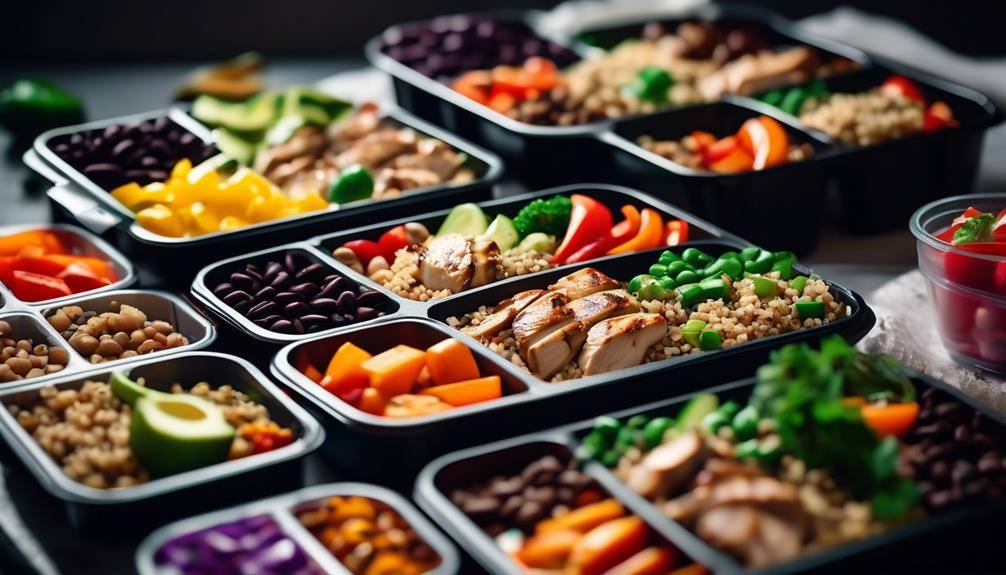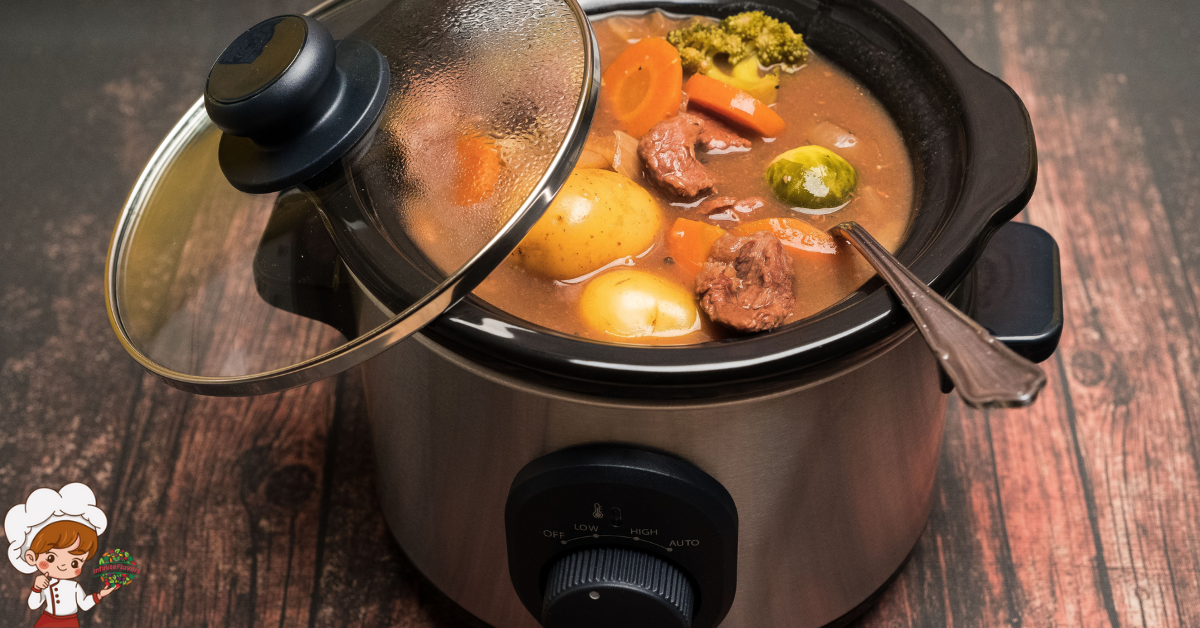Popular Healthy Baking Techniques For Weight Loss
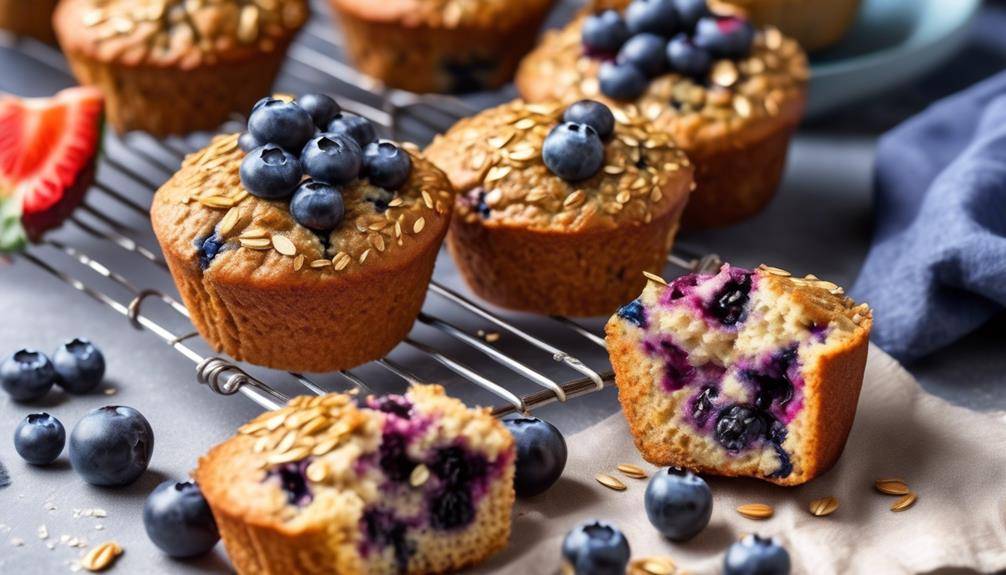
Healthy Baking Techniques For Weight Loss; Are you looking to make some dietary changes to support your weight loss goals without sacrificing your love for baked goods? Well, look no further! In this discussion, we will explore some healthy baking techniques that can help you shed those extra pounds while still enjoying delicious treats. From choosing nutritious flour alternatives to experimenting with healthier baking techniques, we’ve got you covered. So, let’s dive in and discover how you can create mouthwatering, waistline-friendly baked goods that will leave you wanting more.
Choose Nutritious Flour Alternatives
When it comes to baking healthy treats, it’s important to choose nutritious flour alternatives that can enhance the nutritional value of your baked goods. If you’re looking for gluten-free options, there are a variety of alternative flours that are both nutritious and delicious.
One nutritious gluten-free option is almond flour. Made from ground almonds, it is high in protein, healthy fats, and fiber. Almond flour adds a rich, nutty flavor to your baked goods and gives them a moist texture. It is also a good source of vitamin E, magnesium, and potassium. Another great option is coconut flour, which is made from ground coconut meat. It is high in fiber and low in carbohydrates, making it a suitable choice for those following a low-carb or keto diet. Coconut flour also adds a subtle sweetness to your baked goods.
If you’re looking for a flour that is rich in nutrients, consider using whole grain flours like spelt flour or quinoa flour. Spelt flour is an ancient grain that is high in fiber, protein, and minerals. It has a slightly nutty flavor and can be used as a one-to-one substitute for all-purpose flour. Quinoa flour, made from ground quinoa seeds, is also a great option. It is gluten-free, high in protein, and contains all nine essential amino acids. Quinoa flour adds a light, nutty flavor to your baked goods and can be used in a variety of recipes.
Incorporate Healthy Fats and Oils
To continue creating healthier baked goods, it’s important to incorporate healthy fats and oils into your recipes. While it may seem counterintuitive, consuming healthy fats can actually aid in weight loss. Healthy fats, such as those found in avocados, nuts, and olive oil, can help you feel satisfied and full for longer periods of time, reducing the chances of overeating or snacking on unhealthy foods.
Incorporating healthy oils into your baking can bring a multitude of benefits. One of the key advantages of using healthy oils is their ability to improve heart health. Olive oil, for example, contains monounsaturated fats that have been shown to lower bad cholesterol levels and reduce the risk of heart disease. By swapping out unhealthy fats like butter or vegetable shortening with healthier oil options, you can create baked goods that are not only delicious but also better for your cardiovascular health.
Another benefit of incorporating healthy oils is their ability to enhance the absorption of fat-soluble vitamins. Many vitamins, such as vitamins A, D, E, and K, require the presence of fat for proper absorption in the body. By using oils in your baking, you can help ensure that your body is able to absorb these essential vitamins effectively.
It’s important to note that while healthy fats and oils are beneficial for weight loss and overall health, moderation is key. Even though these fats are healthier options, they are still calorie-dense, so it’s crucial to use them in moderation and be mindful of portion sizes.
Incorporating healthy fats and oils into your baking can not only improve the nutritional value of your baked goods but also contribute to your weight loss goals. By making simple swaps and using oils like olive oil or avocado oil, you can create delicious treats that are not only satisfying but also support your overall health.
Reduce Added Sugar Intake
Reducing your intake of added sugar is an important step towards improving your overall health and well-being. Consuming excessive amounts of added sugar has been linked to various health issues, including obesity, type 2 diabetes, and heart disease. By reducing your added sugar intake, you can optimize your portion sizes and promote weight loss.
Added sugars are sugars and syrups that are added to food and beverages during processing or preparation. They contribute to the sweetness of foods but provide little to no nutritional value. The American Heart Association recommends that women limit their added sugar intake to 6 teaspoons (25 grams) per day and men to 9 teaspoons (38 grams) per day.
To reduce your added sugar intake, start by reading food labels. Added sugars can be found in various forms, such as sucrose, high fructose corn syrup, and dextrose. Be aware of these ingredients and choose products with lower sugar content. Additionally, opt for whole foods instead of processed foods, as they are generally lower in added sugars.
Optimizing portion sizes is another effective strategy to reduce added sugar intake. By consuming smaller portions, you can naturally reduce your sugar consumption. Use smaller plates and bowls to control portion sizes and avoid mindless eating. It’s also helpful to pay attention to your hunger and fullness cues to prevent overeating.
Opt for Natural Sweeteners
Consider incorporating natural sweeteners into your baking and cooking routine to reduce the amount of added sugar in your recipes. Reducing sugar intake is an important step towards a healthier lifestyle, and using natural sweeteners is a great way to achieve this. Natural sweeteners are derived from plants and offer a healthier alternative to refined sugars. They not only add sweetness to your dishes but also provide additional nutrients and health benefits.
One popular natural sweetener is honey. Honey is a natural source of sweetness and contains antioxidants, vitamins, and minerals. It has a lower glycemic index compared to refined sugar, which means it doesn’t cause a sudden spike in blood sugar levels. Maple syrup is another great option. It is made from the sap of maple trees and contains fewer calories and more minerals than regular sugar. It adds a rich flavor to your baked goods and can be used as a substitute for sugar in many recipes.
Stevia is a natural sweetener that comes from the leaves of the Stevia rebaudiana plant. It is much sweeter than sugar, so you only need a small amount to achieve the desired level of sweetness. Stevia has zero calories and does not affect blood sugar levels, making it an excellent choice for those watching their weight or managing diabetes.
When using natural sweeteners in your baking, it’s important to note that they may have a slightly different taste and texture compared to traditional sugar. It may take some experimenting to find the right balance for your recipes. Additionally, reducing the amount of sweetener used in your recipes gradually can help your taste buds adjust to the lower levels of sweetness.
Boost Fiber Content With Whole Grains
Incorporating whole grains into your baking can be a simple and effective way to boost the fiber content of your recipes. Whole grains are a great source of dietary fiber, which is essential for a healthy digestive system and can help with weight loss. By increasing your fiber intake, you can feel fuller for longer and reduce the likelihood of overeating.
Whole grains offer numerous benefits beyond just their fiber content. They contain vitamins, minerals, and antioxidants that are essential for overall health. They are also lower in calories and higher in nutrients compared to refined grains, making them a healthier choice for baking.
When choosing whole grains for your recipes, opt for ingredients like whole wheat flour, oat flour, or brown rice flour. These options retain the bran and germ, which are rich in fiber and nutrients. You can also experiment with other whole grain options, such as quinoa, barley, or buckwheat, to add variety to your baking.
To incorporate whole grains into your recipes, you can start by replacing a portion of the refined flour with whole grain flour. For example, if a recipe calls for 2 cups of all-purpose flour, you can substitute 1 cup with whole wheat flour. This simple swap will increase the fiber content without significantly altering the taste or texture of your baked goods.
Add Nutrient-Dense Ingredients
To make your baked goods even healthier, consider adding nutrient-dense ingredients. These power-packed ingredients can provide essential vitamins, minerals, and antioxidants. For example, you can substitute regular flour with almond flour or coconut flour, which are rich in fiber and healthy fats. Additionally, you can incorporate ingredients like chia seeds, flaxseeds, or nuts to boost the nutritional value of your baked treats.
Power-Packed Ingredients
Boost the nutritional value of your baked goods by adding nutrient-dense ingredients that pack a powerful punch. When it comes to choosing the right ingredients for healthy baking, opt for nutrient dense flours. Instead of using refined white flour, try whole wheat flour, almond flour, or coconut flour. These alternatives contain more fiber, protein, and healthy fats, making them a healthier choice for your baked treats.
Additionally, consider healthy baking swaps to reduce the amount of unhealthy fats and sugars in your recipes. For example, you can replace butter with mashed banana or applesauce, and swap out sugar with natural sweeteners like honey or maple syrup. These simple swaps can significantly decrease the calorie and fat content of your baked goods while adding valuable nutrients.
Nutrient-Rich Substitutions
When selecting nutrient-rich substitutions for your baked goods, consider incorporating ingredients that are packed with essential vitamins and minerals. Baking without refined sugar doesn’t mean compromising on taste or nutrition. You can replace refined sugar with natural sweeteners like honey, maple syrup, or dates. These alternatives not only add sweetness but also provide additional nutrients.
For example, honey contains antioxidants and has antibacterial properties. Maple syrup is rich in minerals like manganese and zinc. Dates are high in fiber, potassium, and magnesium. Additionally, you can swap out all-purpose flour with whole grain flour or almond flour to increase the fiber and protein content of your baked goods. Adding nutrient-dense ingredients to your recipes will not only enhance the flavor but also boost the nutritional value of your treats.
Healthier Baking Alternatives
Consider incorporating nutrient-dense ingredients into your baking to enhance both the flavor and nutritional value of your treats. By making healthy baking swaps and using low calorie baking recipes, you can enjoy delicious goodies without compromising your weight loss goals.
One easy swap is replacing refined flours with whole grain alternatives like whole wheat flour or oat flour. These options provide more fiber, vitamins, and minerals compared to their refined counterparts. Additionally, using natural sweeteners like honey or maple syrup instead of processed sugar can help reduce the overall calorie content of your baked goods.
Adding nutrient-dense ingredients such as mashed bananas, unsweetened applesauce, or Greek yogurt can also boost the nutritional value of your treats. These ingredients not only add moisture and flavor but also provide essential vitamins and minerals.
Optimize Portion Sizes for Weight Loss
To optimize portion sizes for weight loss, it is important to be mindful of the amount of food you consume. Portion control plays a crucial role in maintaining a healthy weight. Mindful eating, which involves being aware of your hunger and fullness cues, can help you achieve this goal.
When it comes to portion control, it’s all about finding the right balance. It’s not about depriving yourself or eating tiny amounts of food. Instead, it’s about understanding what a healthy portion looks like and listening to your body’s signals.
One effective strategy is to use smaller plates and bowls. Research has shown that people tend to eat more when their plates are larger, as they feel the need to fill them up. By using smaller plates, you can trick your brain into thinking you’re consuming more food than you actually are.
Another helpful tip is to eat slowly and savor each bite. It takes about 20 minutes for your brain to register that you’re full, so eating slowly gives your body time to recognize its satiety. Put down your fork between bites and chew your food thoroughly. This not only aids digestion but also allows you to enjoy the flavors and textures of your meal.
Lastly, be mindful of portion sizes when eating out or ordering takeout. Restaurants often serve larger portions than what is recommended for a healthy meal. Consider sharing a meal with a friend or asking for a to-go box right away, so you can portion out the appropriate amount before you start eating.
Experiment With Healthier Baking Techniques
Experiment with healthier baking techniques to create delicious treats that are also good for your body. By incorporating healthier baking swaps and innovative baking techniques, you can enjoy guilt-free desserts without compromising on taste or texture.
One simple swap is to replace refined white flour with whole wheat flour or alternative flours like almond flour or oat flour. These alternatives are higher in fiber and nutrients, which can help regulate blood sugar levels and promote a feeling of fullness. Additionally, they add a nutty flavor and a moist texture to your baked goods.
Another healthier baking swap is to use natural sweeteners instead of refined sugar. Options like honey, maple syrup, and coconut sugar can provide sweetness without the empty calories. They also contain trace amounts of minerals and antioxidants that can benefit your health.
Incorporating healthier fats is another way to improve the nutritional profile of your baked treats. Swap out butter for mashed avocado or unsweetened applesauce to reduce saturated fats. You can also use Greek yogurt or coconut oil, which adds moisture and richness without compromising taste.
Innovative baking techniques can also help reduce the calorie and fat content in your desserts. For example, instead of deep-frying, try baking or air frying your treats. This can significantly decrease the amount of added fats while still achieving a crispy texture.
Additionally, try experimenting with ingredient substitutions to create healthier versions of your favorite recipes. For instance, you can swap out whole eggs for egg whites or flaxseed meal mixed with water. This reduces the cholesterol and saturated fat content while still providing structure and moisture.
Healthy Baking Techniques For Weight Loss; Frequently Asked Questions
Can I Use Regular All-Purpose Flour Instead of Nutritious Flour Alternatives?
You can use regular all-purpose flour instead of nutritious flour alternatives, but using alternatives like almond flour or coconut flour can provide more nutrients and benefits for weight loss.
What Are Some Examples of Healthy Fats and Oils That Can Be Used in Baking?
You can use healthy fats and oils like avocado oil, coconut oil, and olive oil in your baking. These can be great substitutes for regular all-purpose flour if you’re looking for nutritious options.
How Can I Reduce the Amount of Added Sugar in My Baked Goods Without Compromising the Taste?
To reduce added sugar in your baked goods without compromising taste, you can try using alternative sweeteners like stevia or monk fruit. Additionally, using regular flour instead of nutritious alternatives may impact texture and flavor.
Are There Any Natural Sweeteners That Are Not Recommended for Baking?
There are natural sweeteners that are not recommended for baking. Some, like stevia, can have a bitter aftertaste. Others, like honey or maple syrup, can alter the texture of your baked goods. It’s important to find the right balance when substituting them in recipes.
What Are Some Nutrient-Dense Ingredients That Can Be Added to Baked Goods for Extra Nutrition?
To add extra nutrition to your baked goods, consider using nutrient-dense flours like almond or coconut flour. You can also try alternative sweeteners like honey or maple syrup for a healthier option.
Conclusion
In conclusion, incorporating healthy baking techniques can be a great way to support weight loss goals while still enjoying delicious treats. By choosing nutritious flour alternatives, incorporating healthy fats and oils, reducing added sugar intake, and using natural sweeteners, you can create baked goods that are both tasty and nutritious. Boosting fiber content with whole grains and adding nutrient-dense ingredients further enhance the health benefits. Experimenting with healthier baking techniques can help you find new ways to enjoy your favorite treats while staying on track with your weight loss journey.




